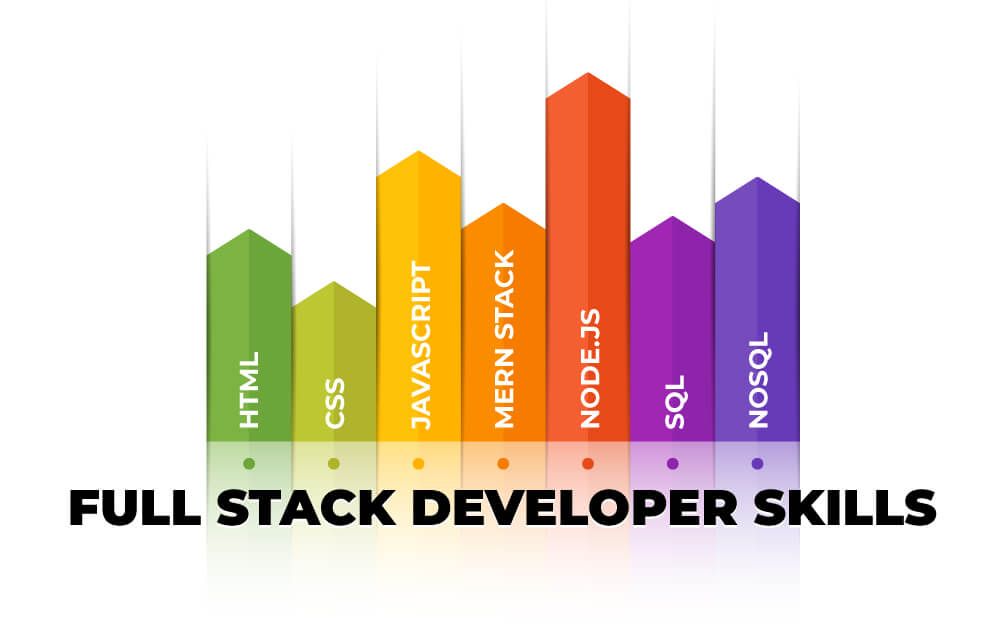Full Stack Developer Roles and Responsibilities
You might have used Facebook, Gmail, and YouTube many times. In fact, many of us use these applications many times a day. All of these are some of the most popular web applications.
Who do you think develops these versatile, robust, and amazing web applications that keep you engaged most of the time?

It is a full-stack developer.
Web development has been around for many years, but with the digital transformation that is going on currently, web applications have gained much momentum in the past few years. Also, with people going online for their routine tasks, applications are so built that they can run on both mobile and laptops/desktops.
Before deciding on taking a Java full stack developer course, let us have some did-you-knows.
Did You Know?
- When the pandemic brought the world to a halt, and many people lost their jobs, full-stack developers were in demand everywhere
- There are numerous full-stack developer jobs available on job portals; only monster.com has around 20,000 listings for the same
- ‘Full-stack engineer’ came in the list of top four most-searched job positions last year
- 2021 observed full-stack developers grow by a CAGR of around 30%
- You can find full-stack developer jobs everywhere across the world; almost all big names are looking for skilled, trained, and certified web developers
So, the stats make it clear that mastering the concepts of full-stack development can help you in having a lucrative career. One of the biggest advantages of learning full-stack development is that instead of committing yourself to a full-time job, you can do freelancing work as well.
Let us have an overview of full stack development and learn about the role of the same.
Full Stack Development at a Glance
In any web application, what you (or the end-user) see is the front end; what works behind the scenes is the back end. And database and other systems are required to integrate the back end with the front end to build a robust web application that is aligned with the user requirements.
Full stack development comprises the development of :
Front-end: From various buttons to logos to the search bar, the complete layout of the web page is the front end of a web application. It is the way a user interacts with the application. A front-end developer generally uses tools and techniques such as HTML, CSS, PHP, JQuery, and more to design the front end.
Back-end: everything present on the front-end has some functionality that a user cannot see. This is the back end. It is all about the working of the front end. This end comprises creating servers, the logic of the site, and also working with APIs(Application Programming Interface) and databases.
So, a full-stack developer is an IT professional who works to design, test, and deploy different software applications. Typically, a full-stack developer is expected to build applications, software, and scalable web applications.
Full-stack developers are generally experts in front-end languages like JavaScript, CSS, and more, and also in back-end tools and techniques.
Every web application comprises a front end, a back end, and a database.
Let us have a look at the typical roles and responsibilities of a Full-Stack Developer.
Roles and Responsibilities of a Full-Stack Developer
Though the roles and responsibilities of a full-stack developer vary from the industry or company you work in, there are some common responsibilities that every full-stack developer is supposed to fulfill. They are mentioned below:
- Building a web application starts with understanding the requirements and expectations of clients or end-users. So, as a full-stack developer, you might be required to interact with members of software development to lay out the scope and scale of the project.
- After studying the requirements, you have to design the front end. This includes designing responsive, interactive, and dynamic web pages with the help of HTML, CSS, and JavaScript libraries and frameworks. You should be able to design an interactive user interface that meets the user requirements.
- Developing the back-end of the application for creating a highly functional website with a back-end architecture that can easily fetch data from servers.
- Building servers and databases must be capable of functioning endlessly and must be resilient to outages.
- Suggesting improvements, troubleshooting, and debugging applications
- Keeping updated regarding the latest technologies and trends in web development
- Making sure that the application developed possesses a cross-platform compatibility feature so that it can be executed on any operating system, including macOS, Windows, and Linux
- Developing APIs – you are accountable for creating APIs for your application on the basis of application architecture.
- Meeting all customer as well as technical requirements to create responsive and interactive applications so that it engages customers in the desired manner.
- Working with other departments to build a smooth and user-friendly web application.
- Make sure that the software or application developed meets all security criteria
Skills Required to become a Full-Stack Developer
As you have gone through the responsibilities of a full-stack developer, you might have got an idea of what skills are the most essential for a full-stack developer. Let’s have an overview.
- Front-end technologies and frameworks
These include an in-depth knowledge of HTML, CSS, and JavaScript to build an interactive, responsive, and appealing front-end of the web application.
- Back-end technologies and Frameworks
These include JavaScript and its environments, such as ExpressJS and NodeJS. Python and Java are the most popular back-end languages among developers. Django and Flask are some of the most common Python libraries used for back-end development.
When you work in a Windows environment, C# can be an ideal choice for back-end development.
- Database management systems such as SQL SERVER, MongoDB, MySQL, DBMS, and Oracle Databases.
- Web Hosting platforms and cloud platforms such as Azure, AWS, Heroku, and more.
- Version Control systems
- Web hosting platforms
Conclusion
You might have got an idea of the job role you need to play as a full-stack developer and what it takes to become one. One thing for sure about this role is that it may get you job satisfaction as well as lucrative salaries.
To become a successful full-stack developer, you can take up an online training course from an accredited edtech company such as Simplilearn.




